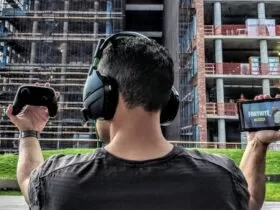A mobile access control system is a critical component in any establishment. This is all the more important for residential buildings, such as apartments, which a lot of people consider to be their home. In the modern world, the usual method for tenants to gain access to their rooms is through a key card or a key fob. Although this method is already considered to be quite safe, it still has room for improvement.
One way to further develop this system is through mobile access control, which does away with using conventional key cards and keyfobs in favor of mobile devices. Systems like Swiftlane’s mobile card readers have slowly entered the market and are being tested out in different establishments. In this article, we’re going to explore this new type of access control system and tell you what things you need to consider when buying or upgrading to one.
How Is It Different From Key Cards and Key Fobs?
A mobile access control system uses mobile phones in place of key cards and key fobs for tenant access and you can unlock samsung phone whenever you want. Aside from that, this system is virtually similar in operation. This means that, at the very least, a mobile access control system is just as secure and just as convenient as compared to using key cards and key fobs.
What Are Its Key Advantages?
Although mobile access control systems work pretty much the same as traditional access control systems, some noteworthy advantages are expected. These are the following:
Convenience
In the usual setup of using key cards and key fobs, tenants would have to carry one more item with them when they go out. One could argue that this is just a minor inconvenience and can be easily disregarded but this is a factor to consider nonetheless. Unlike key cards and key fobs, most tenants carry their mobile phones with them when they leave their rooms. Their phones are always with them in their person wherever they go.
As such, it would make a lot of sense to integrate the function of a key card or a key fob into smartphones so that tenants will have fewer things to worry about. It’s a small detail but it will come in handy if key cards malfunction, go missing, or break.
Customizable
A key card or a key fob is usually programmed to a specific lock, meaning it cannot be conveniently and easily changed. In contrast, a smartphone is very programmable and can be synced with the system without much hassle or fuss. This means that tenants can have access to their system but could also allow other users to enter through a simple change in instruction within an app or a website.
This also means that they can easily gain access to a neighbor’s room if they have been given permission to use their mobile device to unlock the doors. At the end of the day, it makes the granting and revocation of permission as simple and as convenient as possible.

Is It Practical?
In determining the practicality of this system, one would have to look at the benefits and drawbacks of using mobile phones as access devices. On one hand, it enables users to perform more tasks on their phones, which makes their lifestyle a lot more streamlined, comprehensive, and integrated. This means a couple of things: less stuff could go wrong, less things to worry about, and everything can be done through a single tool. On the other hand, this also means that the tenants will be a lot more dependent on their gadgets.
Although this might not be that big of a problem for tech-inclined users, it could be quite a steep learning curve for those who are not well-versed when it comes to gadgets and technology. In the attempt to get the best of both worlds, apartments would have to offer this system as an optional package rather than a mandatory requirement. Effectively, this allows the more tech-savvy individuals to experience the benefits of such a system yet, at the same time, be considerate to those who prefer the usual and traditional approach.



























